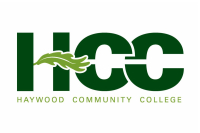Deer reclaim historic home in Cherokee
 From clothing to art to clan names, deer are everywhere in Cherokee culture. But for the past couple of centuries, they’ve been virtually absent from Cherokee land — until now. The Eastern Band of Cherokee Indians is in the initial stages of an effort to reintroduce an important environmental and cultural resource to Western North Carolina.
From clothing to art to clan names, deer are everywhere in Cherokee culture. But for the past couple of centuries, they’ve been virtually absent from Cherokee land — until now. The Eastern Band of Cherokee Indians is in the initial stages of an effort to reintroduce an important environmental and cultural resource to Western North Carolina.
Late last month, EBCI Fisheries and Wildlife Management released 28 young deer to roam tribal lands, the first in a series of releases planned over three years.
“As we learn more about this area and the ecology of deer in this area, we’ll know more about what this area can support,” said Mike LaVoie, program manager for Fisheries and Wildlife.
About 90 percent of the deer — all but the few fawns released with the group — wear radio collars, and all wear identifying tags. That equipment will allow scientists from LaVoie’s department — such as Caleb Hickman, the project’s supervisory biologist — to track the animals. By learning which areas they avoid, which they flock to and how predators affect them, Fisheries and Wildlife will be better able to plan the next steps for a successful reintroduction.
“This project is very adaptive,” LaVoie said. “Asking some questions will lead to more questions.”
Related Items
For now, 10 more deer are awaiting release in the Fish and Wildlife holding pen, and there are plenty more where that came from. The deer are from Morrow Mountain State Park, east of Charlotte. The park’s deer are healthy, but rising populations were beginning to take their toll on the state park’s plant species. Shipping some of the animals over to Cherokee was a win-win for all parties.
The tribe expects to release between 25 and 50 deer each year for the next three years, enlisting help from the North Carolina Wildlife Resource Commission, the North Carolina State Park System and the National Park Service. Exact numbers of deer released will depend on the results of Fisheries and Wildlife monitoring, but they’ll be predominately female. About 85 percent of this year’s batch are does.
“Most of the does are carrying one and two fawns, so that will grow the deer population faster than importing a bunch of bucks would,” LaVoie said.
Obstacles for growth
To some, nurturing the deer population seems like a laughable effort. Not too far north of here, deer are almost a pest species, gulping down gardens and presenting a constant road hazard. Why try to grow a population that obviously grows just fine on its own?
In Western North Carolina, however, it hasn’t been that easy.
When Europeans arrived in Cherokee territory, the tribe dove into the deerskin trade, eventually becoming the largest trader of the many Southeastern tribes engaged in trading. This development was a significant turning point in Cherokee history, introducing its members to a more capitalistic mindset and coinciding with a shift from a matriarchal society to a patriarchal one. Between 1699 and 1715, Southeastern tribes were shipping nearly 54,000 skins annually, and deer were nearly extinct in the Southeast by the time the deerskin trade ended in the 1750s.
But unlike many other regions of the Southeast, this area has strong populations of bear and coyote, which most areas with deer overpopulation problems lack. Large tracts of national forest and national park land filled with hardwood trees also contribute to the difficulty the deer will encounter. Leaf canopies cover about 85 percent of Cherokee land.
“People often think of deer as living in the forest, but deer often do better when they have a mix of forest and open habitat,” LaVoie said.
The intersection between forest and open fields, called edge, can be one of the most biologically diverse areas of a landscape, and for deer, it’s perfect. They can browse on the leafy plants that abound in the sunlight but turn their white tails to flee for cover amongst the trees as soon as they sense a threat.
However, these kinds of habitats have decreased greatly in public lands over the past 100 years, largely due to fire suppression policies. Forests need disturbance, such as fire or timber harvest, to stay healthy. Those treatments make way for younger trees and allow for a greater diversity of species, both animal and vegetable, and they’re vital for maintaining a healthy ecosystem. That’s not a reality lost on LaVoie.
“I think just generally there’s as lot of opportunity to manage our forests in a sustainable way,” he said.
So, as Fisheries and Wildlife continues to manage the deer introduction project, they’ll also look to the realm of forest management for clues to creating a more sustainable environment.
Cultural restoration
Environment is not the only value that LaVoie hopes the deer will help to sustain. It’s also a cultural project.
“In a way, this is an example of self-determination,” said Tyler Howe, of the Tribal Historic Preservation Office. “This is something the tribe is doing on their own. They feel it’s important to them, that cultural commitment to deer.”
Throughout their history, Cherokee wore deerskins, ate venison and used glue made from their hooves. Motifs of the fleet-footed animal were thought to improve the speed of a message’s delivery or the swiftness of an athlete. The tribe even named one of its seven clans after the whitetail deer. Then, when the deerskin trade erupted, the species also became the symbol for change.
“What’s unique about deer in Cherokee history is it’s a symbol of cultural change and also cultural maintenance,” Howe said.
Part of the tribe’s mission in all its environmental management efforts is to restore important cultural elements like the whitetail deer to their traditional place in Cherokee life. Ideally, Lavoie would like to see the herd grow, in balance with its predators and its food source, so that tribal members can once again practice some of their traditional skills, such as hunting.
“That’s years down the line, but we think restoring historically important subsistence foods are important to the tribe’s culture and identity,” he said.
The tribe has seen success in restoring native animals to its lands before, most notably with the 2001 reintroduction of elk. To the joy of residents and wildlife managers alike, a herd has taken up residence in Cherokee land.
“The tribe has been very supportive of the elk restoration effort,” LaVoie said. “We see elk almost every day in Cherokee these days. Restoring a large native mammal like that is a benefit for wildlife.”
So, as scientists tweak the project around the ungulates’ taste for native plants and role as a food source for bears, culture can never stay far from the environmental motives of their studies.
For Cherokee, identity is intricately tied to the biology of the Southeast,” LaVoie said, “and the more we can educate people on their conservation and restoration, the more it helps to build a sustainable culture here in Cherokee.”
Citizen science
Science isn’t necessarily best left to scientists. As they watch the progress of the whitetail deer’s reintegration to Cherokee tribal lands, scientists at the EBCI Fisheries and Wildlife Management Department are looking to the locals for help.
“We’re asking folks to call into our office and report sightings,” said Mike LaVoie, program manager of Fisheries and Wildlife.
The department will use that information to better understand how the deer are grouping and interacting, both with their environment and with one another.
“Monitoring wildlife is often seen as a purely scientific endeavor for experts, but citizen science is an easy way for citizens to be involved,” he said.
To report deer sightings on Cherokee land, call 828.554.6113.









